TEMPLE OF LITERATURE & NATIONAL UNIVERSITY – THE LOCATION CANNOT BE IGNORED WHEN VISIT HANOI
As a relic complex of Vietnam’s first university, Temple of Literature is not only a historical and cultural relic but also a place where many scholars and students come here to pray for luck in examinations and education.
- 1. Where is the Temple of Literature and National University?
- 2. Entrance fee to Temple of Literature and National University
- 3. History of the Temple of Literature and National University
- 4. The architecture of the Temple of Literature and National University
- 5. Sightseeing sites in Temple of Literature and National University
- 6. Meaning of Temple of Literature and National University
1. Where is the Temple of Literature and National University?
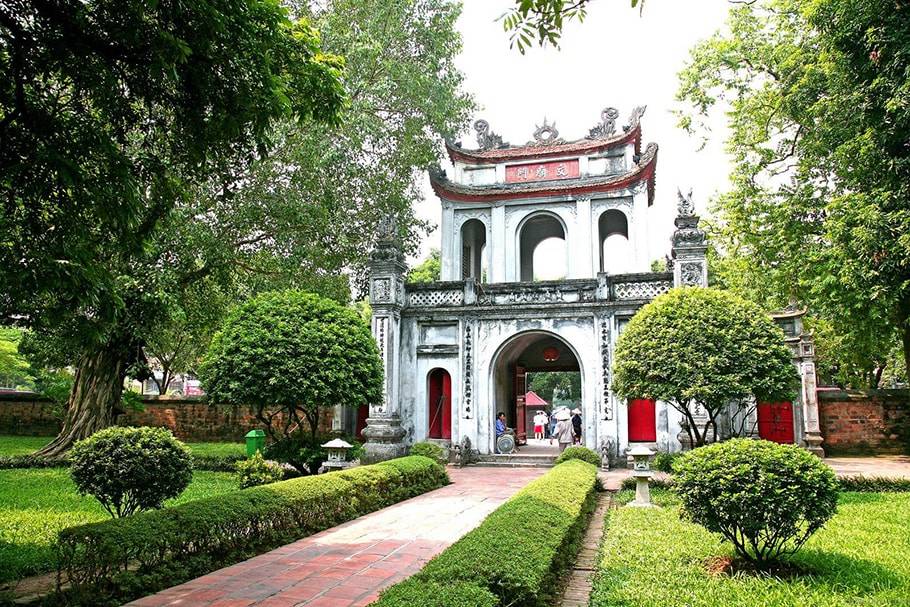
Address: 58 Quoc Tu Giam, Dong Da, Hanoi
Temple of Literature is located in Dong Da district, Hanoi, in the middle of 4 main streets, including Nguyen Thai Hoc, Ton Duc Thang, Van Mieu, and Quoc Tu Giam. If you start from Ho Guom, go along Le Thai To Street, turn right to Trang Thi Street, go to Cua Nam and Nguyen Khuyen Streets, then turn left to Van Mieu Street.
Because there are many one-way streets in Hanoi, especially around the Temple of Literature, please pay attention to avoid traffic violations. If you go by bus, you take the following routes 02, 23, 38, 25, 41. These buses will stop near this area.
2. Entrance fee to Temple of Literature and National University
Currently, tourists and people visiting the Temple of Literature must buy an entrance ticket. Adult tickets are 20,000 VND (about $1/ ¥ 100) and children tickets are 10,000 VND (about $0.5/ ¥ 50). This is a fairly low price and applies to both Vietnamese and foreign guests.
3. History of the Temple of Literature and National University
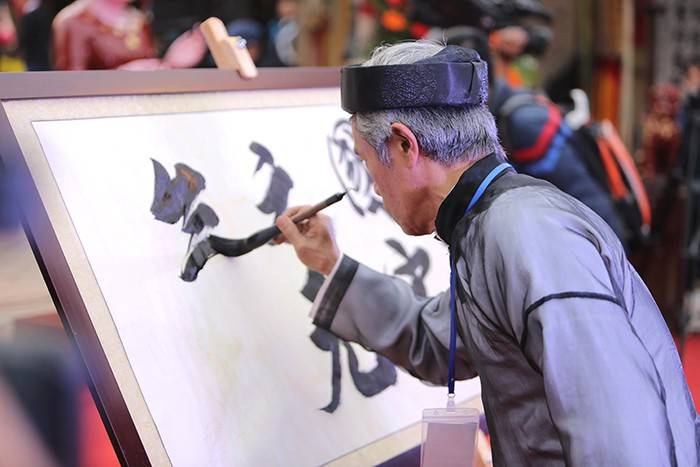
The Temple of Literature was built in 1070 under the reign of King Ly Thanh Tong. This is also the place to worship Confucius, Chu Cong, and Four Sages. In 1076, King Ly Nhan Tong established the National University (Quoc Tu Giam) nearby as a university dedicated to the king’s children and noble families. By the time of King Tran Thai Tong, Quoc Tu Giam was renamed Quoc Hoc Vien and accepted the children of civilians with excellent academic ability.
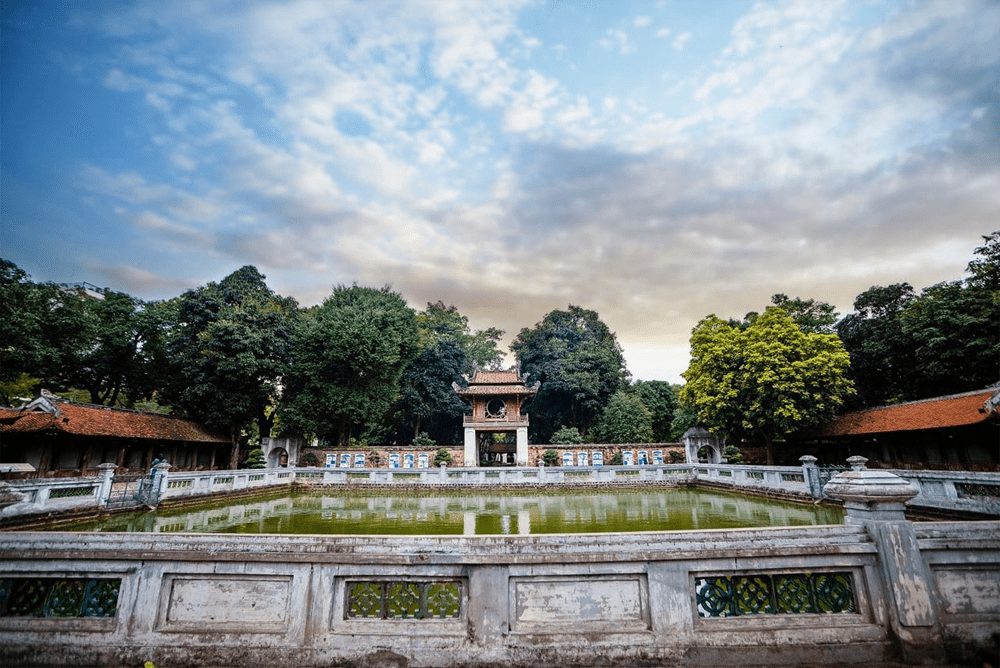
In the post-Le period, the reign of King Le Thanh Tong began to build steles for doctoral candidates. In the Nguyen Dynasty, National University was established in Hue. Thang Long Temple was renovated to be a Literature Temple of Bac Thanh Town, later changed to Hanoi Temple of Literature.
4. The architecture of the Temple of Literature and National University
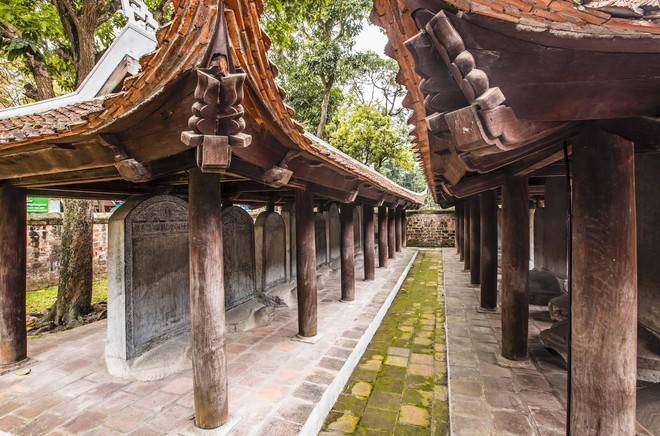
The current Temple of Literature and National University relics is located on a land area of 54331 m2, including many small architectural works. After many remodeling, this relic complex still includes Ho Van, Van Mieu Mon, Dai Trung Mon, Khue Van Cac, Thien Quang well, steles, Dai Thanh Mon and Thai Hoc house.
Teaching houses in the East and West have two rows of 14 rooms. The dormitory for students consists of three blocks with 25 rooms in each block, and one room is enough for two students. All of the current architecture are those of the early Nguyen Dynasty.
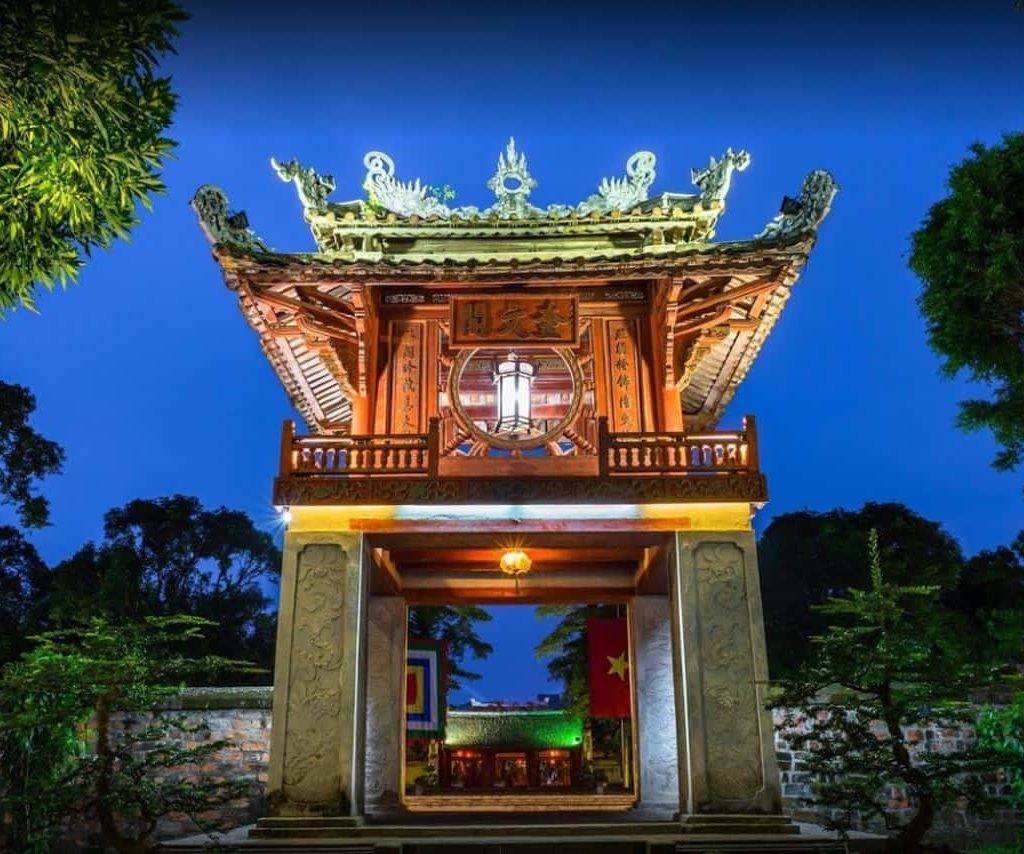
In front of the Temple of Literature, there is a large lake called Van Chuong Lake, previously known as Thai Ho. In the middle of the lake is Kim Chau mound. Formerly, there was a floor to admire the scenery. In the main gate, there are four pillars. On the left and right are steles named “Ha Ma,” while the surrounding is high walls. The Temple of Literature is built in the style of three-dimensional architecture, on which there are three words, “Van Mieu Mon” in ancient Chinese characters.
5. Sightseeing sites in Temple of Literature and National University
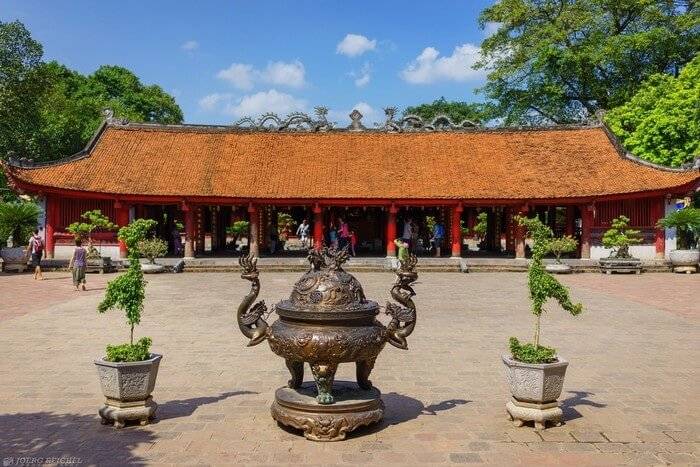
-The first area
Starting with the main gate of the Temple of Literature is the gate Dai Trung Mon. Then, the two small gates on both sides are Thanh Duc Mon and Dat Tai Mon.
-The second area
From the gate Dai Trung Mon to Khue Van Pavilion.
Khue Van pavilion is not massive, but the building rate is perfectly harmonious. The architecture consists of 4 square pillars (85cm x 85cm) below to support the upper floor, with beautiful wooden structures. There are 4 round doors with the support of wooden railings on the upstairs. Double-layer tiled roofs form an 8-roofed building with the flat roof edge and the surface.

-The third area
This area contains the square-shaped Thien Quang Tinh Lake (meaning the well illuminates the Sun). On both sides of the lake is the stele area for doctors. Each stele is made of stone with the names of people who passed the exam, such as Poinsetta (Trang Nguyen), the first-rank doctorate second laureate (Bang Nhan), First-rank doctorate third laureate(Hoa Tham), The Second Dr (Hoang Giap) and the third Doctor. All the steles are placed on the back of a rock turtle. Now, there are still 82 steles from the examinations from 1442 to 1779, which are the most precious relics of the monument.
-The fourth area
As the central area and the main architecture of the Temple of Literature, this location consists of two significant works arranged parallel and successive. The outer building is the Worship area (Bai Duong), while the inner court is Upper Palace (Thuong Cung). This is the area worshiping Confucius and Four Sages (Nhan Tu, Tang Tu, Tu Tu, Manh Tu).
– The fifth area
This is Thai Hoc building. During the Nguyen Dynasty, Quoc Tu Giam in Hanoi was abolished, then Thai Hoc building was changed to Khai temple to worship the father and mother of Confucius. However, this building was destroyed during the anti-French war. The new Thai Hoc building area was rebuilt in Hanoi in 1999. In this fifth area, there is also the Tien Duong – Hau Duong house, which is a place of worship of the kings Ly Thanh Tong, Ly Nhan Tong, Le Thanh Tong, and Chu Van An.
6. Meaning of Temple of Literature and National University
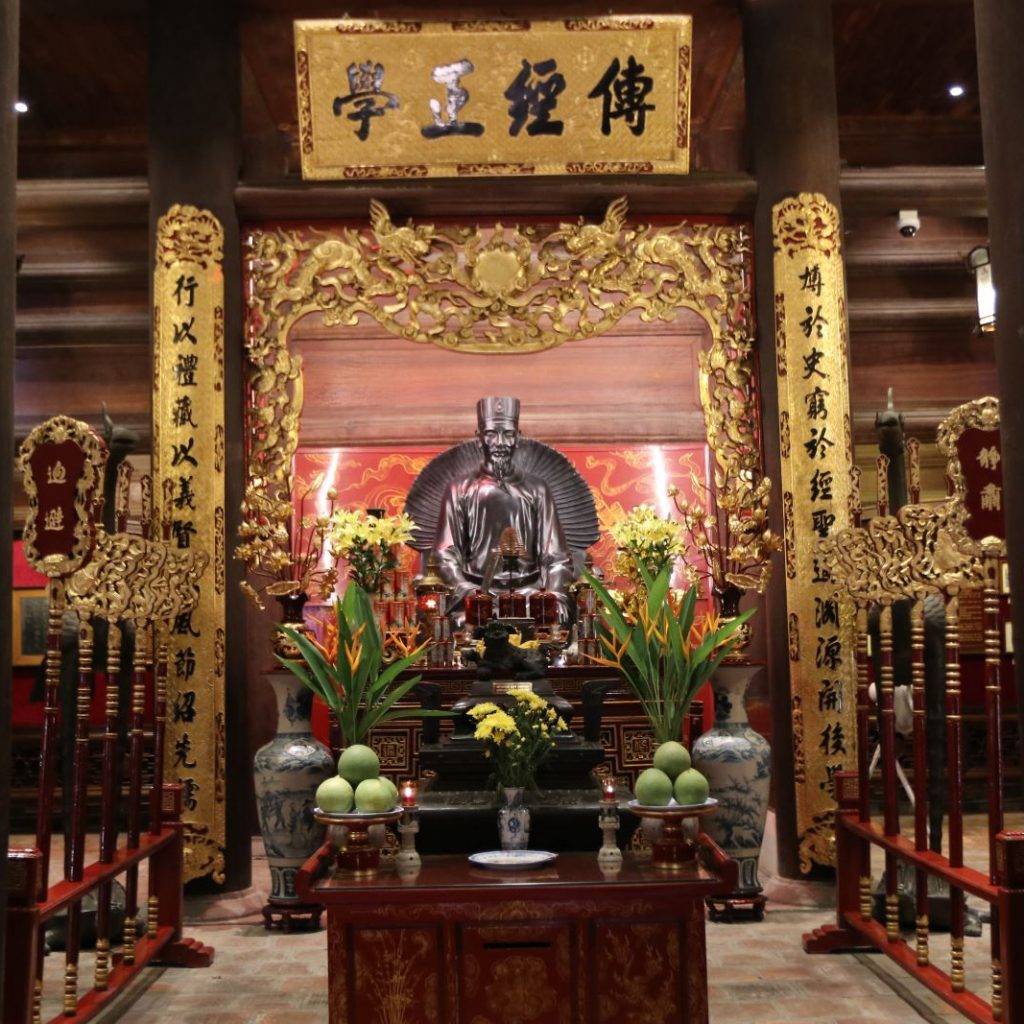
The Temple of Literature – National University is not only the first university of our country but also a candle lighting the Vietnamese fondness of learning. Besides, today, the Temple of Literature – National University is also a place to organize poetry festivals, a place to praise excellent students, and a famous sightseeing site to attract a large number of domestic and national tourists when coming to Hanoi.
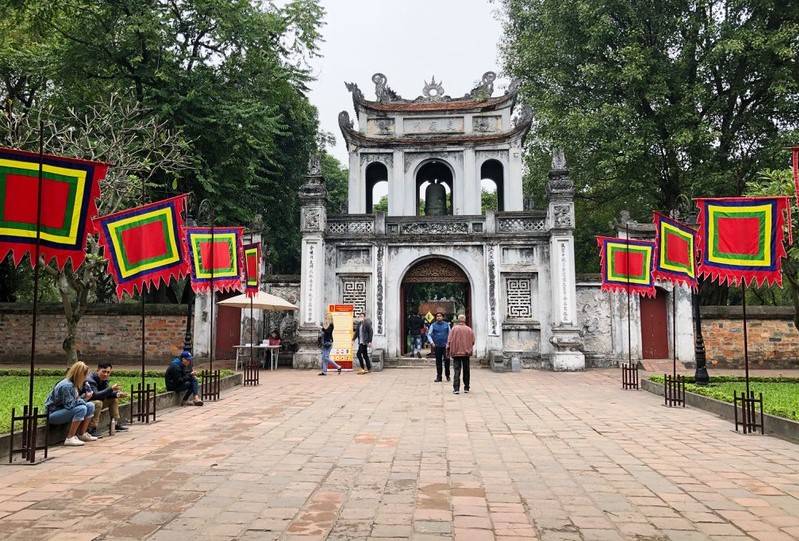
At the same time, this is also a meeting place to “ask for words” of the capital people on traditional Tet holidays with the wish of a happy new year; or during important exams of the country, students come here to wish for the successful passing.
Through many ups and downs of time and historical events, some of the architectures here have been destroyed. However, the Temple of Literature – National University is still considered a symbol of the educated elite, as well as the cultural beauty of Vietnam.

